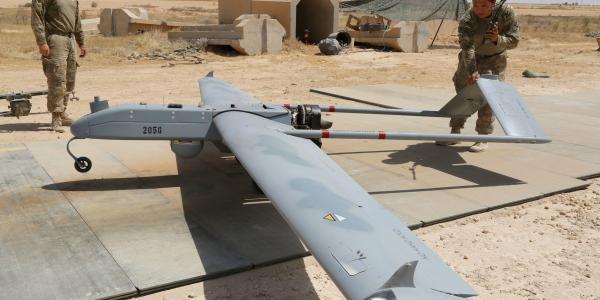A Vision for ISR Modernization
Some defense leaders say that making small, incremental improvements is the best approach to modernizing the military’s intelligence, surveillance and reconnaissance capabilities. They might not be correct, explains one leader in the ISR community in the first of a two-part series.
While attending an intelligence, surveillance and reconnaissance (ISR) conference about a year ago, a senior U.S. military member stated that the best approach to modernizing and evolving ISR capabilities was through incremental steps. He used a baseball metaphor, saying, “We need to try to hit a series of singles rather than swing for the fences and try to do something big.” He cited a series of large ISR programs valued in the hundreds of millions of dollars that eventually were canceled, shelved or yielded little in terms of new capabilities.
I understood his rationale for advocating an incremental approach to ISR modernization, but I also wondered where the “small ball” approach was leading. I’ve worked in the ISR community for almost 40 years and experienced the transformation from wet film reconnaissance in the ’70s to digital sensors, data links and deployable automated ground stations in the ’80s. The ’90s were the age of real-time sensor-to-shooter integration, and now it’s the era of unmanned platforms. All were major steps to transform ISR that resulted from vision, advanced technology and relentless government and industry focus. A small-ball approach may be a good tactical technique for developing incremental capability, but it fails to articulate a vision for the future of ISR. We must ensure that these “singles” move us toward an overarching vision for ISR modernization. If not, they simply will be a series of random and disconnected responses to the latest maintenance improvements, incremental IT upgrades and one-off, quick-reaction capabilities.
An overarching vision for ISR modernization is critically important to the nation. We have an enormous ISR capability in need of continuous modernization. Each year, the military’s combatant commands (COCOMs) create integrated priorities lists, with ISR modernization perennially topping them. The COCOMs want more ISR capability; improvements to interoperability among U.S. and coalition partners; better data sharing; access to information across the ISR enterprise; more timeliness and accuracy; and improvements in delivering actionable information to forces that need it at the last tactical mile of the battlefield.
To meet COCOMs’ and National Command Authority needs, we must evolve the current ISR platforms, sensors and ground systems into a truly global ISR enterprise. It can be done with focused singles, but they must be focused on larger, more overarching actions to migrate common ISR information technology infrastructure issues. Principally, modernization actions must be orchestrated toward the larger goal of an integrated ISR enterprise. This can be done through three Defense Department ISR focus areas:
- Creating a global networked enterprise consisting of military service ISR ground stations and COCOM intelligence centers.
- Developing advanced sensors, platforms and communications.
- Improving delivery of timely ISR information to the last tactical mile.
We will delve into more detail on those three ISR focus areas in the next blog, so stay tuned.
Ralph Wade is a vice president in the Strategic Innovation Group at Booz Allen Hamilton.




Comment
"Singles" Aren't Enough
ISR has plenty of room for improvement, but I'm not sure I agree with the focus areas as they are stated, nor with the Senior Military Leader's tactics to achieve a win. When modernizing, we still need to define the end state or "win". I believe that the win is consistent, dependable delivery of timely ISR information to those that require it, but singles aren't enough.
To win, we need a fully developed, robust, impenetrable intel network infrastructure capable of delivering timely actionable information. The strategy, however, has to consider the competition and our line up against them within the environment we are playing. The tactics to support the strategy are not limited to "singles" necessarily, but are more typical with any game...singles, doubles, triples, homers AND a strong defense! Singles and doubles equate to advancing sensors, miniaturizing avionics, improving comms, etc as you suggest as a focus area, but even those aren't enough. A triple (even more rare than homers) would be a highly accurate automated raw data interpretation capability with the speed to keep up with data collection. The occasional innovative home run may be an uniquely powered ISR UAV capable of months, or years of airborne surveillance. A strong defense (playing at double play depth) to prevent cyber attacks against our data collection and infiltrating our ops centers is critical as well.
When we approach ISR Modernization, in my mind it's critical not to jump to a tactic before fully establishing our desired outcome (winning!) and the strategy to achieve the win. To be sure, winning comprises of much more than "singles".
Comments